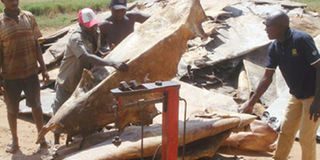County seeks investors to establish tanneries

Meru county is seeking investors to establish leather tannery factories to boost the earnings of local beef farmers. PHOTO | FILE |
What you need to know:
- The county is set to host an international investment conference in June to spur development.
Meru county is seeking investors to establish leather tannery factories to boost the earnings of local beef farmers.
The county is set to host an international investment conference in June to spur development.
Speaking to Sunday Nation, county director for livestock development David Kimenchu said the area had the potential to host two tanneries.
He said the devolved unit had a population of 250,000 beef animals, valued at Sh7.5 billion, with more than 10,000 hides and skins produced every month. The dairy animal population is estimated at 180,000 head of cattle, valued at Sh6.8 billion, producing milk worth Sh3.5 billion annually.
Mr Kimenchu said a small leather tannery requires about 140 hides and skins daily. The county hopes to address the deficits by sourcing hides and skins from neighbouring counties.
He said the county government has in the past two years initiated programmes to improve beef breeds.
“We bought 20 hybrid Sahiwal bulls to improve our animals. Already, 12 calves have been born and we hope to have over 100 improved calves by the end of the year.
The new breed is fast-growing and bigger, giving more value to farmers,” Mr Kimenchu said, noting that five of the bulls had died due to injuries and disease.
The director said the county is in the process of importing semen for dual-purpose breeds known as Gir from Brazil to improve milk and beef production.
“The Gir breed is good for milk and meat production. It is small in size and requires little feeding, hence appropriate for semi-arid parts of the county. We are also importing Sahiwal breed semen to compliment the bulls,” he said.
DEPLETION OF PASTURE
Mr Kimenchu said the county has been promoting commercialisation of grass and fodder to sustain the growing number of livestock. He said the area could get overwhelmed by the population of beef cattle, leading to depletion of pasture.
“Due to rain failure and population pressure, pasture land is decreasing. We have trained farmers on fodder production and development. We are distributing seeds and have acquired a mower, raker and motorised baler for hire by farmers,” he said.





